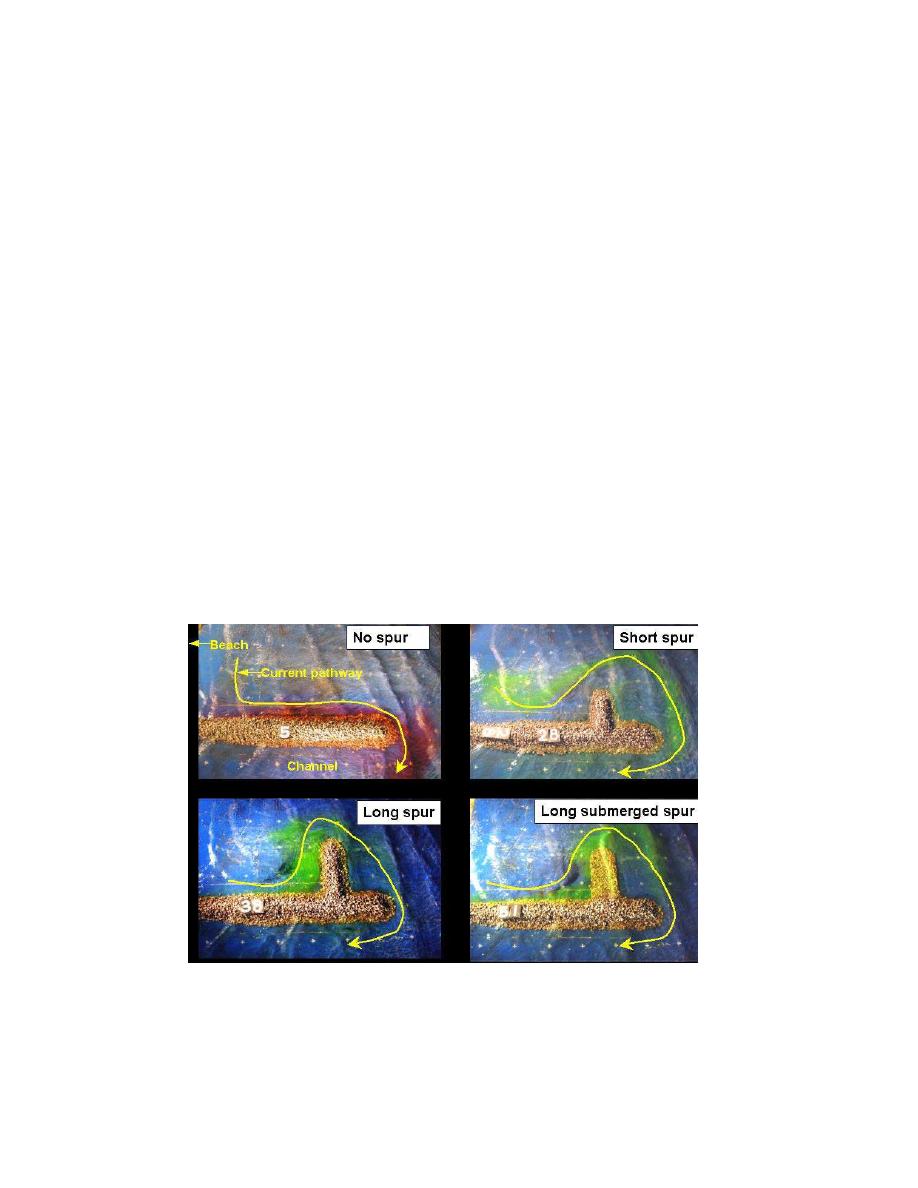
January 13, 2004
14:36
WSPC/101-CEJ
00094
558
W. C. Seabergh & N. C. Kraus
4.3. Physical modeling of spurs
Monitoring study of the Siuslaw Inlet project by Pollock, et al. (1995) found good
agreement with physical model predictions of Bottin (1981, 1983). The field monitor-
ing indicated that, at high water, the flow patterns were circular eddies [Fig. 15(a)]
and there was a strong seaward-flowing rip current along the jetty. At lower tide
stages, and dependent on wave height, there might be an "S"-shaped flow pattern
[Fig. 15(b)]. The results were similar in the physical model study. Based on this
information, it may be noted that wave height, tide stage, and water depth are
probably significant design parameters for determining the hydraulic response of
spur jetties and most likely the sediment circulation response.
A study of spurs was initiated in the USACE Coastal Inlets Research Program
physical inlet model (Seabergh, 2001). The physical model facility is a large experi-
mental basin (46 m wide by 99 m long) with an idealized inlet and smooth offshore
contours. Short-period waves and tidal currents can be simulated in this facility.
A scale of 1:50 is applied to this generic inlet configuration. Twin parallel jetties
were placed at the inlet entrance, with three spur conditions examined. Wave height,
wave period, and tidal current were varied to produce different surf and along-shore-
current conditions. Experiments included measurement of wave height, measurement
current meters, and examination of sediment pathways with a lightweight sediment
tracer. Initial, or base, experiments collected data for the parallel jetty configuration.
Fig. 16. Dye movement of wave-generated and tidal currents approaching jetty for a 2.4 m, 10 sec-
onds wave and Figaximum e movemeurrentvo-generamd and tiinl curaennelppTaceing rettwfoollo.w-s the path of the
m ure 16. Dy flood c nt of wa ef 1.4 te /sec da ch r nts a . roh h arj o y fr a 2 4
m, 10-sec wave and maximum flood current of 1.4 m/sec in channel. The arrow follows the
current.
path of the current.



 Previous Page
Previous Page
